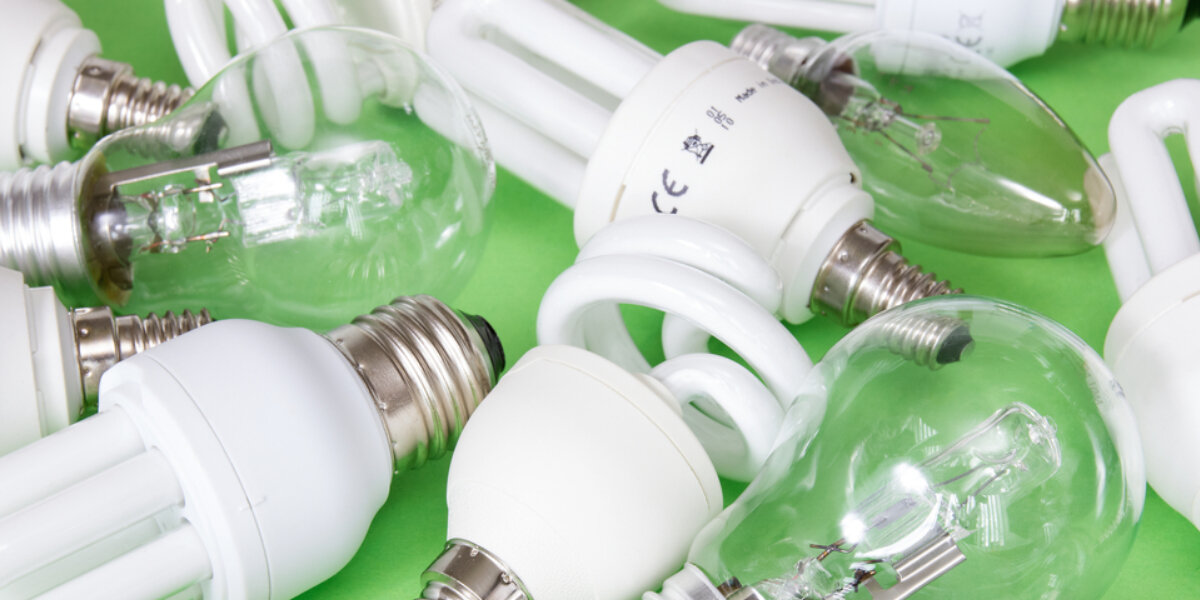The Electrical and Electronic Equipment Act (ElektroG) contains binding regulations on how to dispose of lighting and lamps to minimise their environmental impact. The law, which was passed in 2006, is the national implementation of EU requirements. The aim of the disposal regulations is to recycle as many components as possible so that they can be reused.
Disposing of Light Bulbs
To clarify terms: illuminant is another word for lamp or bulb, meaning only the light-generating components of lighting fixtures; the term luminaire refers to the connection of lamps to all other components of the end product, such as the housing and the supply cable. Which lamps are to be recycled is precisely defined: These are fluorescent bulbs and gas discharge bulbs; likewise, the regulation concerns all types of luminaires that are not used in private households. No recycling is envisaged for incandescent lamps including halogen lamps, nor for all luminaires originating from private households.
Disposing of Old Light Bulbs
So if you want to dispose of your old light bulbs, you can safely put them in the normal household waste. Halogen bulbs, i.e. light bulbs containing inert gases that extend their life and increase their efficiency, can thus also end up in the residual waste bin. Broken light bulbs are also thrown away as normal - but in this case, you should act in an environmentally conscious way and put the shattered glass bulbs in the waste glass.
Where Do I Dispose of Energy-saving Light Bulbs?
The 'energy-saving lamps' available on the market are usually compact fluorescent lamps, which thus belong to the group of discharge lamps. This type of lamp contains small amounts of mercury and must be disposed of separately, for which there are two options: On the one hand, the municipal collection points for hazardous waste (recycling centres), and on the other hand, voluntary transfer points that are also affiliated with the non-profit organisation Lightcycle Retourlogistik und Service GmbH. This company was founded by the German lamp industry, as the responsibility for taking back and recycling discarded lamps lies with the manufacturers.
Caution: Because of the mercury that may be present in small quantities and is dangerous if inhaled directly, you should always take the precaution of ventilating well when an energy-saving lamp or other discharge lamp breaks!
How to Dispose of Fluorescent Tubes?
Since fluorescent tubes, which are often referred to as neon tubes in popular usage, are also discharge lamps, they must also be disposed of at regional collection points. Companies must also dispose of their other discharge lamps here, for example high-pressure sodium lamps, halogen, metal halide lamps and low-pressure sodium lamps.
Disposing of LED bulbs
The ElektroG classifies discarded LED lamps as waste electrical equipment, so they must also be disposed of at recycling centres. Unlike discharge lamps, however, defective LEDs do not pose any health risk.
Disposing of Luminaires
Luminaires as a whole always contain electronic components, of course, and must not simply be disposed of in household waste, as indicated by the symbol of the crossed-out dustbin. Broken luminaires can also be disposed of at official collection points. Alternatively, luminaires can be taken back free of charge by companies commissioned by the luminaire industry, such as Interseroh.


